Abstract
Panos, Charles (University of Illinois College of Medicine, Chicago, and Albert Einstein Medical Center, Philadelphia, Pa.). Streptococcal L-forms. IV. Comparison of the metabolic rates of a Streptococcus and derived L-form. J. Bacteriol. 84:921–928. 1962.—Glycolytic rates of hexoses, amino sugars, pentoses, two-carbon compounds, and certain intermediates of glycolysis and the adaptive response to glucose of a group A Streptococcus and its derived L-form were compared. It was found that removal of the streptococcal cell wall did not result in the loss of the homolactic characteristic of the parent coccus or in a marked increase in the metabolism of certain glycolytic intermediates by the L-form. It was shown that (i) a major difference exists between the coccus and its L-form in the metabolism of glucosamine and N-acetylglucosamine; (ii) apparently, a loss of selectivity and internal control occurred in the transformation to the L-form; and (iii) this form, unlike the parent coccus, displayed an adaptive response to glucose. These data were not the result of an internal loss of essential cofactors or enzymes by diffusion from within the L-form. Nor could they be accounted for by dry-weight differences due to loss of the streptococcal cell wall. Finally, it was observed that the sonically disintegrated L-form in 0.5 m NaCl was capable of a glycolytic activity of 46% of that of the total intact culture. These data suggest that the conversion of a streptococcus to the L-form is accompanied by an alteration in carbohydrate metabolism as well as the loss of the cell wall. Previously reported data are in agreement with these findings and support the conclusion that the resulting form is not merely a bacterial cell without a rigid cell wall.
Full text
PDF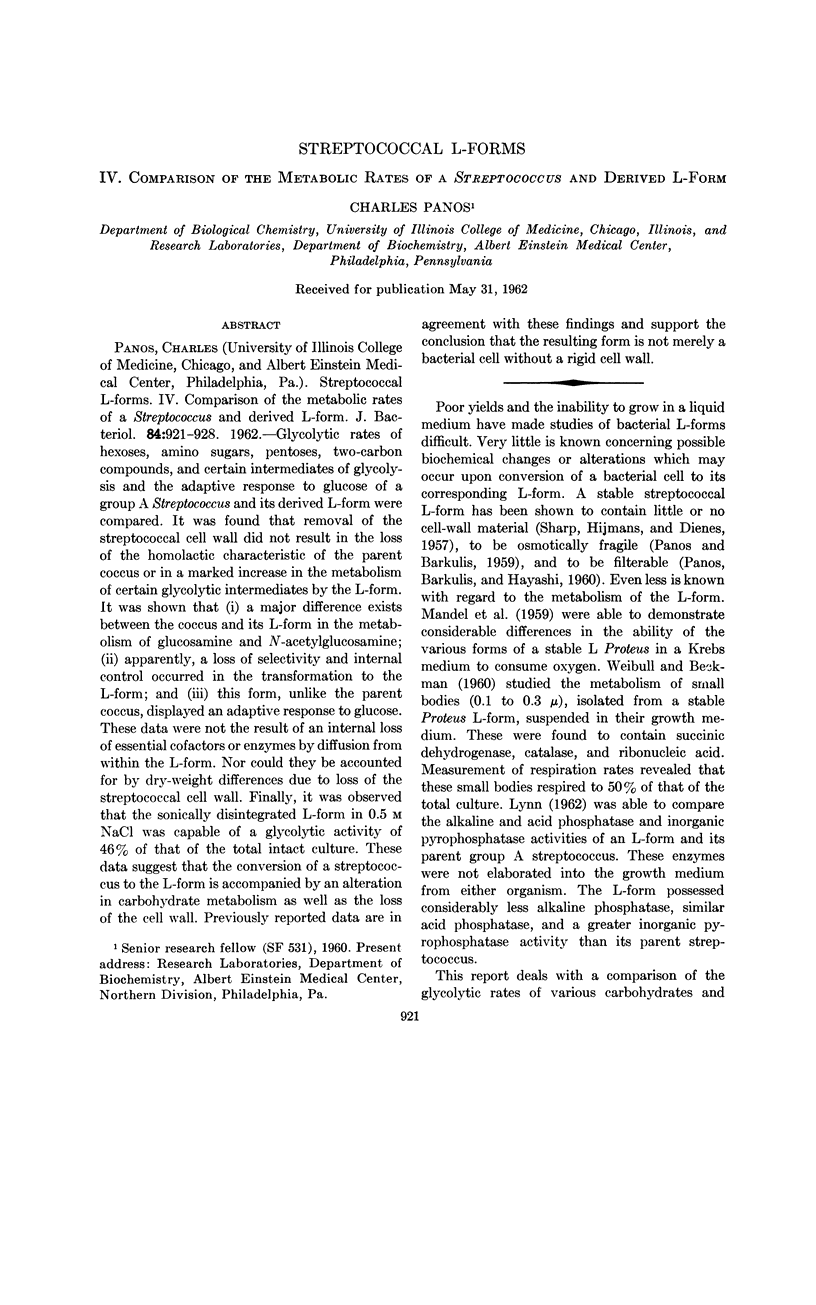
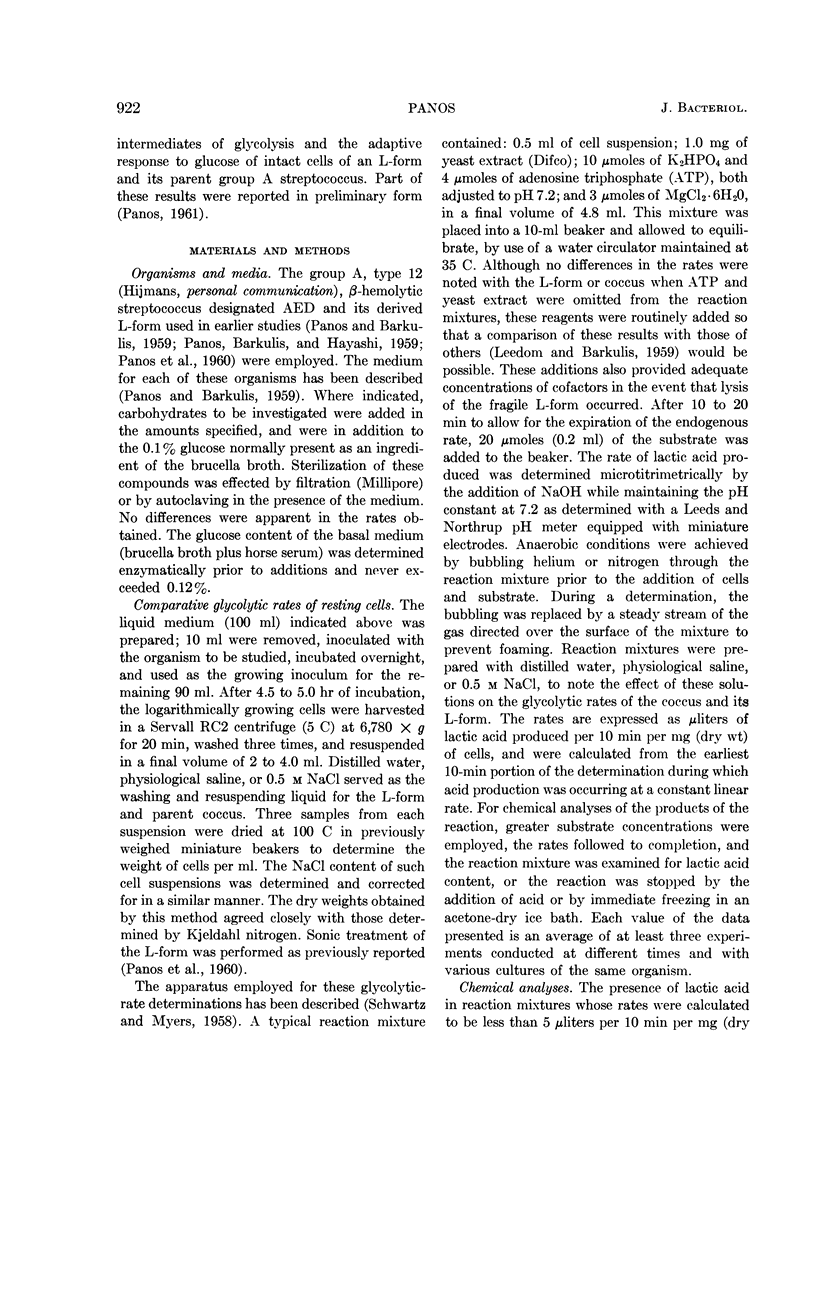
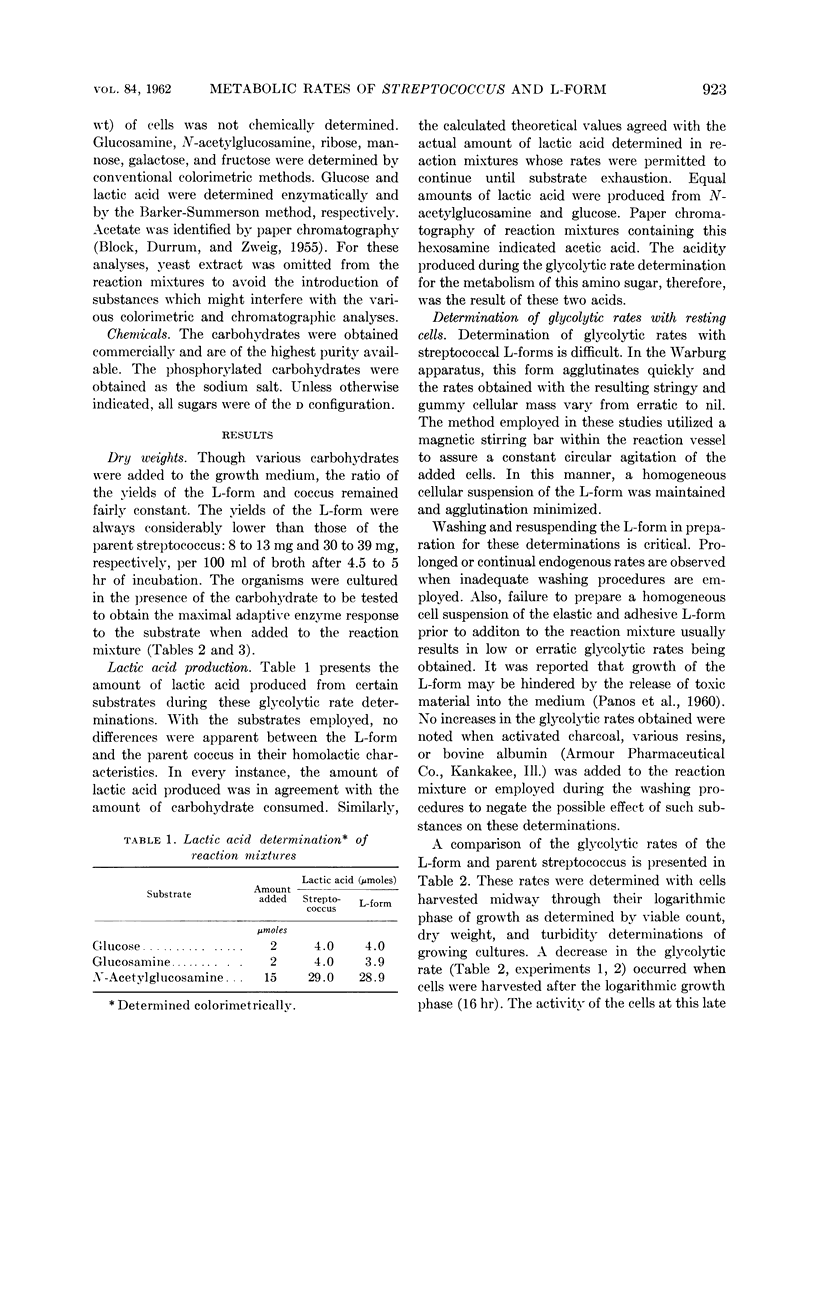
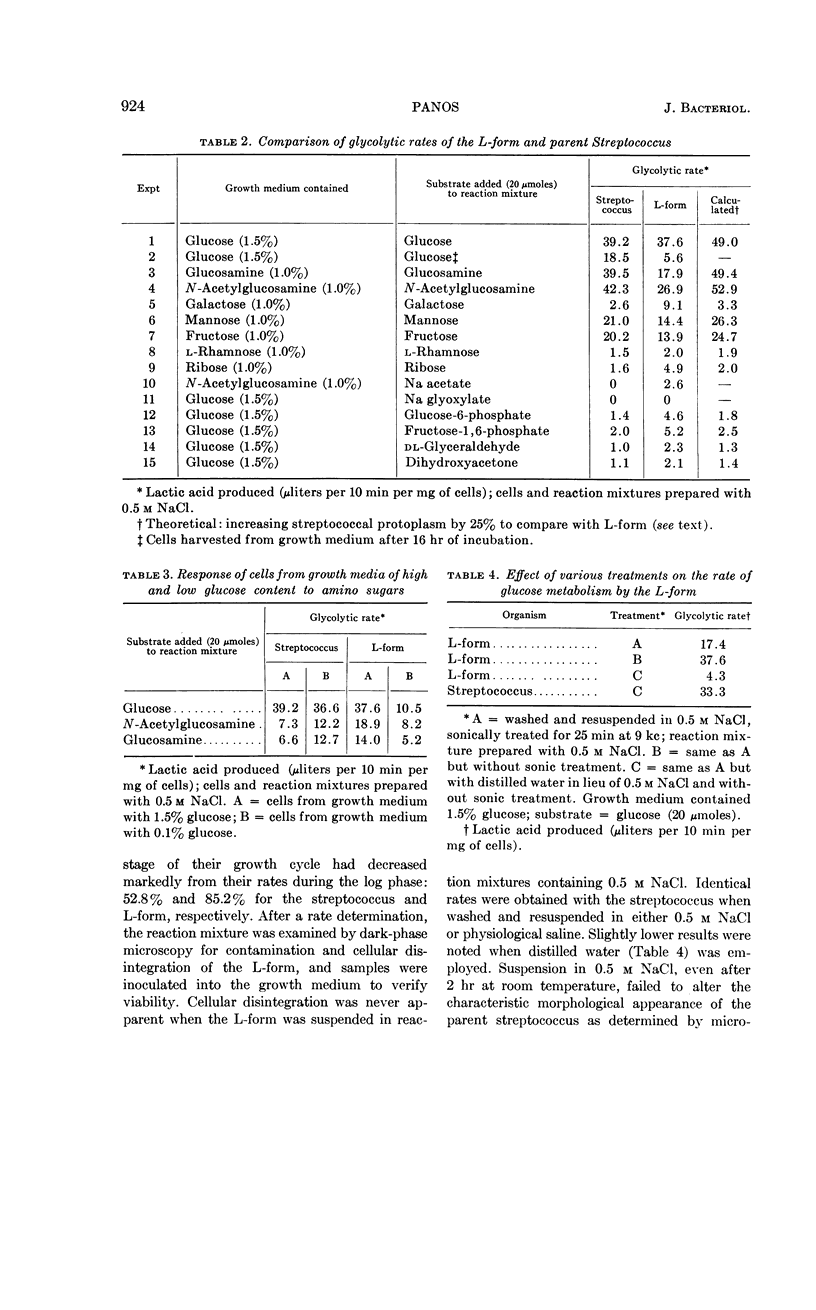
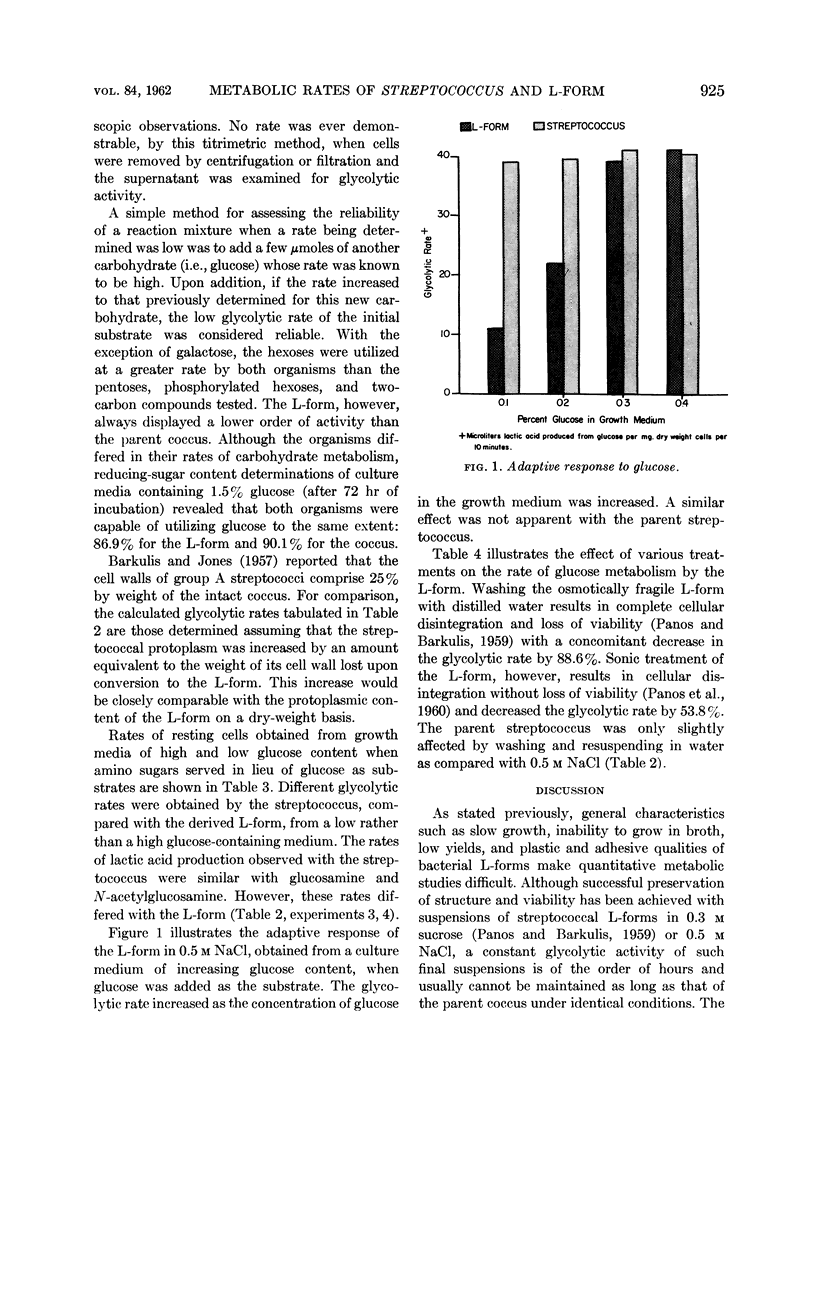
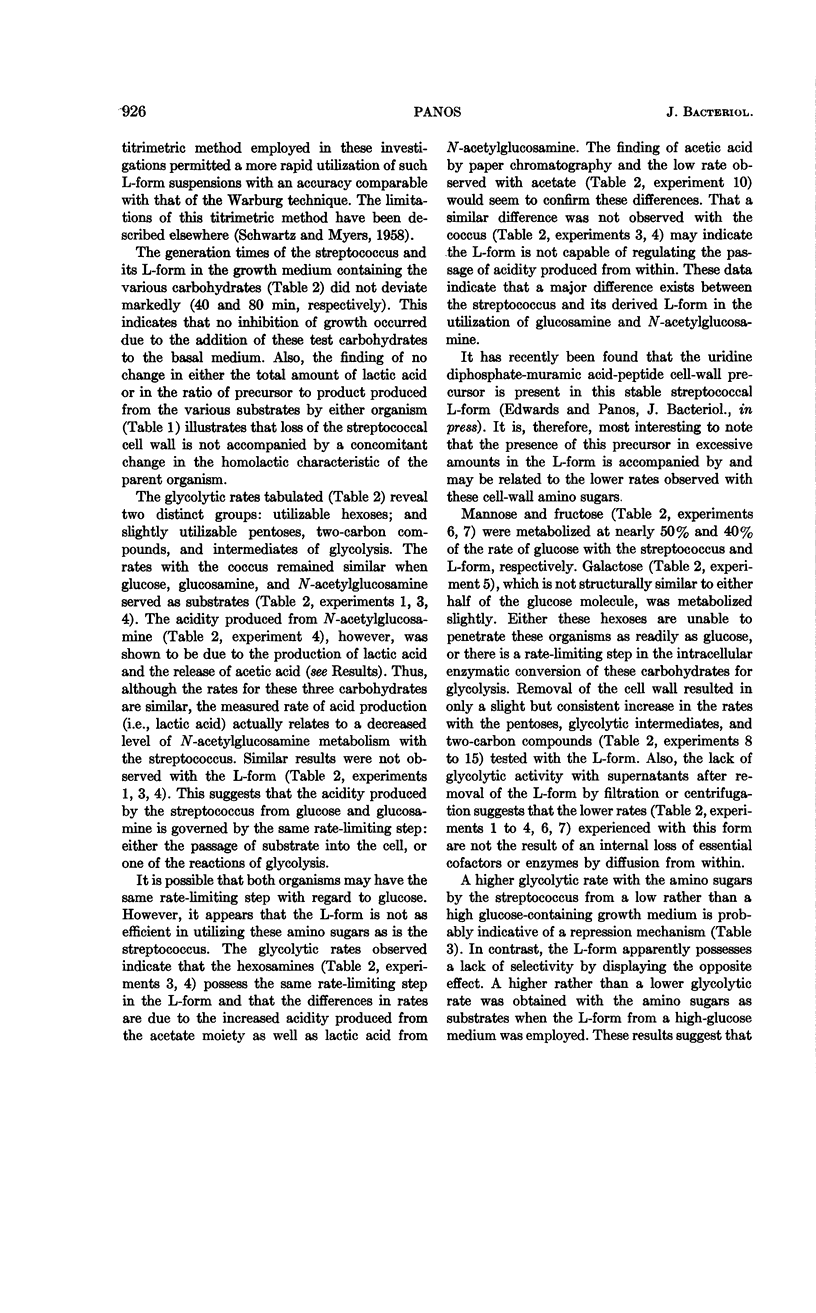
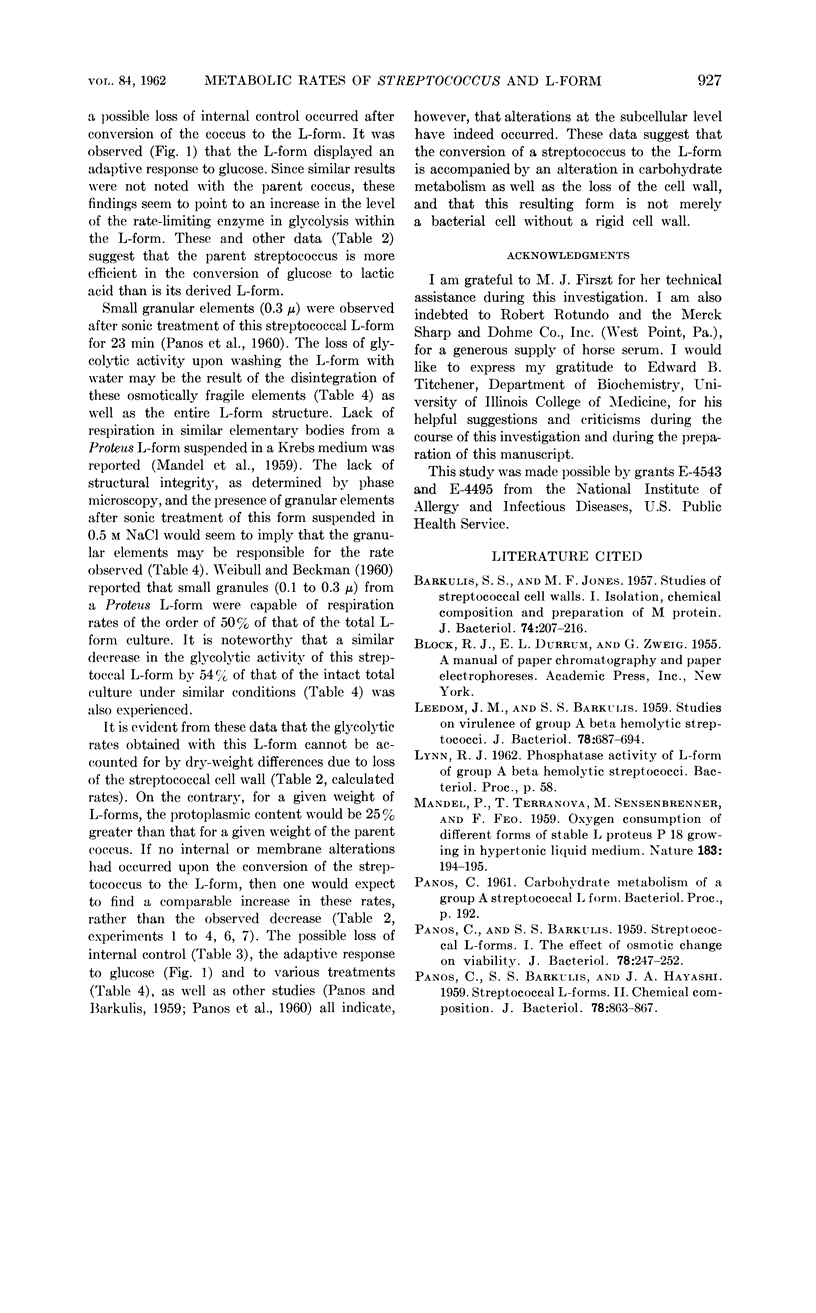
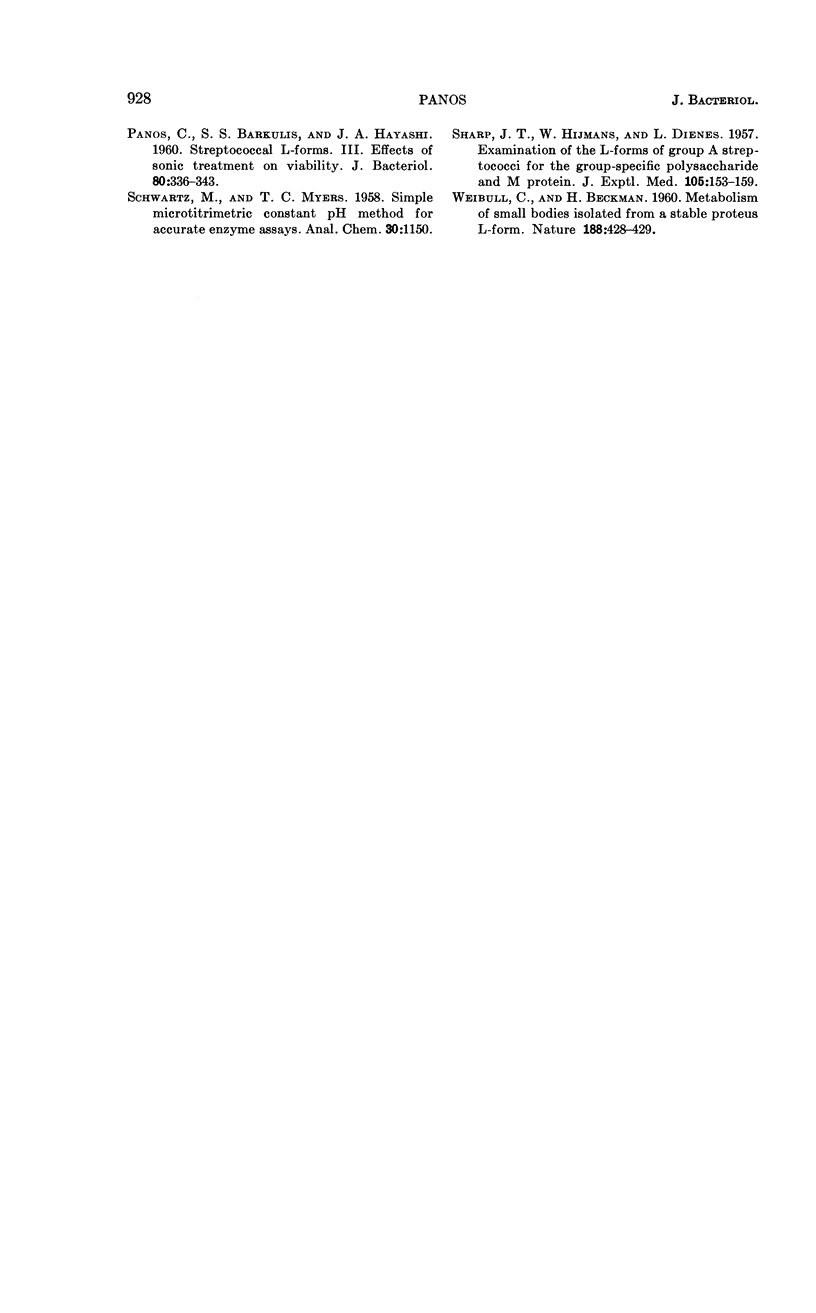
Selected References
These references are in PubMed. This may not be the complete list of references from this article.
- BARKULIS S. S., JONES M. F. Studies of streptococcal cell walls. I. Isolation, chemical composition, and preparation of M protein. J Bacteriol. 1957 Aug;74(2):207–216. doi: 10.1128/jb.74.2.207-216.1957. [DOI] [PMC free article] [PubMed] [Google Scholar]
- LEEDOM J. M., BARKULIS S. S. Studies on virulence of group A beta-hemolytic streptococci. J Bacteriol. 1959 Nov;78:687–694. doi: 10.1128/jb.78.5.687-694.1959. [DOI] [PMC free article] [PubMed] [Google Scholar]
- MANDEL P., TERRANOVA T., SENSENBRENNER M., FEO F. Oxygen consumption of different forms of stable L Proteus P 18 growing in hypertonic liquid medium. Nature. 1959 Jan 17;183(4655):194–195. doi: 10.1038/183194a0. [DOI] [PubMed] [Google Scholar]
- PANOS C., BARKULIS S. S., HAYASHI J. A. Streptococcal L forms. II. Chemical composition. J Bacteriol. 1959 Dec;78:863–867. doi: 10.1128/jb.78.6.863-867.1959. [DOI] [PMC free article] [PubMed] [Google Scholar]
- PANOS C., BARKULIS S. S., HAYASHI J. A. Streptococcal L forms. III. Effects of sonic treatment on viability. J Bacteriol. 1960 Sep;80:336–343. doi: 10.1128/jb.80.3.336-343.1960. [DOI] [PMC free article] [PubMed] [Google Scholar]
- PANOS C., BARKULIS S. S. Streptococcal L forms. I. Effect of osmotic change on viability. J Bacteriol. 1959 Aug;78:247–252. doi: 10.1128/jb.78.2.247-252.1959. [DOI] [PMC free article] [PubMed] [Google Scholar]
- SHARP J. T., HIJMANS W., DIENES L. Examination of the L forms of group A streptococci for the group-specific polysaccharide and M protein. J Exp Med. 1957 Feb 1;105(2):153–159. doi: 10.1084/jem.105.2.153. [DOI] [PMC free article] [PubMed] [Google Scholar]
- WEIBULL C., BECKMAN H. Metabolism of small bodies isolated from a stable Proteus L form. Nature. 1960 Oct 29;188:428–429. doi: 10.1038/188428b0. [DOI] [PubMed] [Google Scholar]


